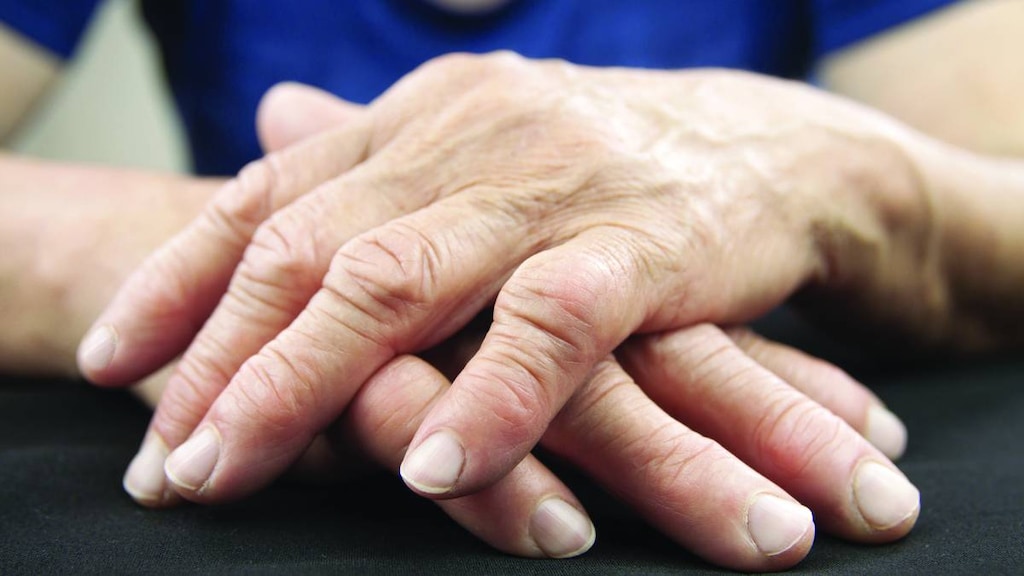Boxed Warning
Risk of serious infections:
Patients treated with sarilumab are at increased risk for developing serious infections that may lead to hospitalization or death. Opportunistic infections have also been reported in patients receiving sarilumab. Most patients who developed infections were taking concomitant immunosuppressants such as methotrexate or corticosteroids.
Avoid use of sarilumab in patients with an active infection.
Reported infections include:
- Active tuberculosis, which may present with pulmonary or extrapulmonary disease. Patients should be tested for latent tuberculosis before sarilumab use and during therapy. Treatment for latent infection should be initiated prior to sarilumab use.
- Invasive fungal infections, such as candidiasis, and pneumocystis. Patients with invasive fungal infections may present with disseminated, rather than localized, disease.
- Bacterial, viral and other infections due to opportunistic pathogens.
Closely monitor patients for signs and symptoms of infection during treatment with sarilumab. If a serious infection develops, interrupt sarilumab until the infection is controlled.
Consider the risks and benefits of treatment with sarilumab prior to initiating therapy in patients with chronic or recurrent infection.
Dosage Forms
Excipient information presented when available (limited, particularly for generics); consult specific product labeling.
Solution Auto-injector, Subcutaneous [preservative free]:
Kevzara: 150 mg/1.14 mL (1.14 mL); 200 mg/1.14 mL (1.14 mL)
Solution Prefilled Syringe, Subcutaneous [preservative free]:
Kevzara: 150 mg/1.14 mL (1.14 mL); 200 mg/1.14 mL (1.14 mL)
Pharmacology
Mechanism of Action
Sarilumab is an interleukin-6 (IL-6) receptor antagonist which binds to both soluble and membrane-bound IL-6 receptors. Endogenous IL-6 is induced by inflammatory stimuli and mediates a variety of immunological responses. IL-6 produced by synovial and endothelial cells leads to local production of IL-6 in joints affected by inflammatory processes such as rheumatoid arthritis. Inhibition of IL-6 receptors by sarilumab leads to a reduction in CRP levels.
Pharmacokinetics/Pharmacodynamics
Distribution
Vdss: 7.3 L
Excretion
Elimination is predominantly through the linear, non-saturable proteolytic pathway at high concentrations; at lower concentrations, elimination is predominately through non-linear saturable target-mediated pathway.
Time to Peak
2 to 4 days
Half-Life Elimination
Concentration dependent:
200 mg every 2 weeks: Up to 10 days
150 mg every 2 weeks: Up to 8 days
Use in Specific Populations
Special Populations Note
There was a trend toward higher apparent clearance of sarilumab in the presence of anti-sarilumab antibodies.
Use: Labeled Indications
Rheumatoid arthritis: Treatment of moderate to severe active rheumatoid arthritis in adults who have had an inadequate response or intolerance to one or more disease-modifying antirheumatic drugs.
Contraindications
Hypersensitivity to sarilumab or any component of the formulation
Dosage and Administration
Dosing: Adult
Note: Do not initiate if ANC is <2,000/mm3, platelets are <150,000/mm3 or if ALT or AST are >1.5 times ULN.
Rheumatoid arthritis: SubQ: 200 mg once every 2 weeks. Note: May use as monotherapy or in combination with nonbiologic DMARDs. Do not use in combination with biologic DMARDs.
Dosing: Geriatric
Refer to adult dosing.
Dosing: Adjustment for Toxicity
Hematologic toxicity:
ANC >1,000/mm3: No dosage adjustment necessary.
ANC 500 to 1,000/mm3: Interrupt therapy; when ANC >1,000/mm3, resume at 150 mg once every 2 weeks (may increase to 200 mg once every 2 weeks as clinically appropriate).
ANC <500/mm3: Discontinue.
Platelets 50,000 to 100,000/mm3: Interrupt therapy; when platelet count is >100,000/mm3, resume at 150 mg once every 2 weeks (may increase to 200 mg once every 2 weeks as clinically appropriate).
Platelets <50,000/mm3: If confirmed by repeat testing, discontinue.
Nonhematologic toxicity:
Hypersensitivity (anaphylaxis or other clinically significant hypersensitivity reaction): Stop immediately and discontinue permanently.
Infection (serious): Interrupt treatment until the infection is controlled.
Administration
SubQ: Administer subcutaneously. Rotate injection sites; may inject into the thigh, abdomen (avoiding the 2-inch area around the navel), or outer area of upper arm. Allow prefilled syringe and prefilled pen to sit at room temperature for 30 or 60 minutes, respectively, prior to use; do not warm in any other way. Solution should be clear and colorless to pale yellow; do not shake. Administer the full amount in the prefilled syringe or prefilled pen; do not administer if window on pen is solid yellow (indicates pen has been used). Do not inject into skin that is tender, damaged, or has bruises or scars.
Storage
Store at 2°C to 8°C (36°F to 46°F) in original carton to protect from light. Do not freeze or shake. May store at ≤25°C (77°F) for ≤14 days. Do not store at >25°C (77°F). After removal from the refrigerator, use within 14 days or discard.
Drug Interactions
BCG (Intravesical): Immunosuppressants may diminish the therapeutic effect of BCG (Intravesical). Avoid combination
Belimumab: May enhance the immunosuppressive effect of Biologic Disease-Modifying Antirheumatic Drugs (DMARDs). Avoid combination
Biologic Disease-Modifying Antirheumatic Drugs (DMARDs): May enhance the immunosuppressive effect of other Biologic Disease-Modifying Antirheumatic Drugs (DMARDs). Avoid combination
Cladribine: May enhance the immunosuppressive effect of Immunosuppressants. Avoid combination
Coccidioides immitis Skin Test: Immunosuppressants may diminish the diagnostic effect of Coccidioides immitis Skin Test. Monitor therapy
CYP3A4 Substrates (High risk with Inducers): Sarilumab may decrease the serum concentration of CYP3A4 Substrates (High risk with Inducers). Monitor therapy
Denosumab: May enhance the adverse/toxic effect of Immunosuppressants. Specifically, the risk for serious infections may be increased. Monitor therapy
Echinacea: May diminish the therapeutic effect of Immunosuppressants. Consider therapy modification
Fingolimod: Immunosuppressants may enhance the immunosuppressive effect of Fingolimod. Management: Avoid the concomitant use of fingolimod and other immunosuppressants when possible. If combined, monitor patients closely for additive immunosuppressant effects (eg, infections). Consider therapy modification
Leflunomide: Immunosuppressants may enhance the adverse/toxic effect of Leflunomide. Specifically, the risk for hematologic toxicity such as pancytopenia, agranulocytosis, and/or thrombocytopenia may be increased. Management: Consider not using a leflunomide loading dose in patients receiving other immunosuppressants. Patients receiving both leflunomide and another immunosuppressant should be monitored for bone marrow suppression at least monthly. Consider therapy modification
Natalizumab: Immunosuppressants may enhance the adverse/toxic effect of Natalizumab. Specifically, the risk of concurrent infection may be increased. Avoid combination
Nivolumab: Immunosuppressants may diminish the therapeutic effect of Nivolumab. Consider therapy modification
Ocrelizumab: May enhance the immunosuppressive effect of Immunosuppressants. Monitor therapy
Pidotimod: Immunosuppressants may diminish the therapeutic effect of Pidotimod. Monitor therapy
Pimecrolimus: May enhance the adverse/toxic effect of Immunosuppressants. Avoid combination
Roflumilast: May enhance the immunosuppressive effect of Immunosuppressants. Consider therapy modification
Siponimod: Immunosuppressants may enhance the immunosuppressive effect of Siponimod. Monitor therapy
Sipuleucel-T: Immunosuppressants may diminish the therapeutic effect of Sipuleucel-T. Management: Evaluate patients to see if it is medically appropriate to reduce or discontinue therapy with immunosuppressants prior to initiating sipuleucel-T therapy. Consider therapy modification
Smallpox and Monkeypox Vaccine (Live): Immunosuppressants may diminish the therapeutic effect of Smallpox and Monkeypox Vaccine (Live). Monitor therapy
Tacrolimus (Topical): May enhance the adverse/toxic effect of Immunosuppressants. Avoid combination
Tertomotide: Immunosuppressants may diminish the therapeutic effect of Tertomotide. Monitor therapy
Trastuzumab: May enhance the neutropenic effect of Immunosuppressants. Monitor therapy
Vaccines (Inactivated): Immunosuppressants may diminish the therapeutic effect of Vaccines (Inactivated). Management: Vaccine efficacy may be reduced. Complete all age-appropriate vaccinations at least 2 weeks prior to starting an immunosuppressant. If vaccinated during immunosuppressant therapy, revaccinate at least 3 months after immunosuppressant discontinuation. Consider therapy modification
Vaccines (Live): Immunosuppressants may enhance the adverse/toxic effect of Vaccines (Live). Immunosuppressants may diminish the therapeutic effect of Vaccines (Live). Management: Avoid use of live organism vaccines with immunosuppressants; live-attenuated vaccines should not be given for at least 3 months after immunosuppressants. Exceptions: Smallpox and Monkeypox Vaccine (Live). Avoid combination
Adverse Reactions
>10%:
Hepatic: Increased serum ALT (≤3 X ULN: 5% to 43%), increased serum AST (≤3 X ULN: 30%)
1% to 10%:
Dermatologic: Injection site pruritus (2%)
Endocrine & metabolic: Hypertriglyceridemia (1%)
Gastrointestinal: Oral herpes (<2%)
Genitourinary: Urinary tract infection (3%)
Hematologic & oncologic: Neutropenia (10%), leukopenia (2%), change in platelet count (decreased: 1%)
Immunologic: Antibody development (9%; 2% of population had antidrug antibodies at baseline; neutralizing antibodies: 7%)
Local: Injection site reaction (7%), erythema at injection site (4%)
Respiratory: Upper respiratory tract infection (3%), nasopharyngitis (≤4%)
Frequency not defined:
Dermatologic: Cellulitis
Respiratory: Pneumonia
<1%, postmarketing, and/or case reports: Gastrointestinal perforation, herpes zoster, hypersensitivity reaction, opportunistic infection
Warnings/Precautions
Concerns related to adverse effects:
- GI perforation: Has been reported, typically secondary to diverticulitis or concomitant use of NSAIDs or corticosteroid therapy. Monitor for new-onset abdominal symptoms.
- Hematologic effects: Neutropenia and thrombocytopenia may occur; may require treatment interruption, dose modification, or discontinuation. Monitor neutrophils and platelets. Do not initiate treatment in patients with an ANC <2,000/mm3 or platelet count <150,000/mm3; discontinue treatment for ANC <500/mm3 or platelet count <50,000/mm3.
- Hepatotoxicity: Sarilumab is associated with transaminase elevations; monitor liver function tests prior to therapy initiation and during treatment. Do not initiate treatment in patients who have ALT or AST >1.5 x ULN; discontinue treatment for ALT >5 x ULN. Transaminase elevations are typically reversible and generally do not result in clinically evident hepatic injury; patients receiving concomitant hepatotoxic drugs (eg, methotrexate) are at an increased risk of developing elevated transaminases.
- Hyperlipidemia: Therapy is associated with increases in triglycerides, LDL, and/or HDL; monitor lipids approximately 4 to 8 weeks after initiation, then approximately every 6 months.
- Hypersensitivity reactions: Hypersensitivity reactions such as injection-site rash, rash, and urticaria have been reported. Patients should seek medical attention if symptoms of hypersensitivity reaction occur. Stop administration immediately in patients who develop anaphylaxis or other hypersensitivity reaction to sarilumab.
- Infection: [US Boxed Warning]: Serious and potentially fatal infections (including active tuberculosis, invasive fungal, bacterial, viral, and other opportunistic infections) have been reported in patients receiving sarilumab. Most of the serious infections have occurred in patients on concomitant immunosuppressive therapy. Closely monitor patients for signs/symptoms of infection during treatment. If serious infection develops, withhold sarilumab until infection is controlled. Prior to treatment initiation, carefully consider risk versus benefit in patients with chronic or recurrent infections, tuberculosis exposure, history of or current opportunistic infection, underlying conditions predisposing to infection, or patients residing in or with travel to areas of endemic tuberculosis or endemic mycosis. The most common serious infections occurring have included pneumonia and cellulitis; opportunistic infections reported have included tuberculosis, candidiasis, and pneumocystis. Patients may present with disseminated infection. Do not administer sarilumab to a patient with an active infection, including localized infection.
- Malignancy: Use of sarilumab may increase malignancy risk; impact on the development and course of malignancies is not fully defined; however, malignancies were observed in clinical trials.
- Tuberculosis: [US Boxed Warning]: Tuberculosis (TB) (pulmonary or extrapulmonary) has been reported in patients receiving sarilumab; both reactivation of latent infection and new infections have been reported. Evaluate patients for TB risk factors and test for latent infection prior to initiating treatment. Treat patients with latent TB before initiating sarilumab; consider anti-TB therapy prior to initiation of sarilumab in patients with a history of latent or active TB if adequate course of treatment cannot be confirmed, and for patients with risk factors for TB despite a negative test. Some patients who test negative prior to therapy may develop active infection; monitor for signs and symptoms of TB during and after treatment in all patients.
- Viral reactivation: Viral reactivation has been observed with immunosuppressive biologic therapy. Herpes zoster has been reported in patients receiving sarilumab. The risk for hepatitis B reactivation with sarilumab therapy is unknown; monitor for signs/symptoms of viral reactivation.
Disease-related concerns:
- Hepatic impairment: Use is not recommended in patients with active hepatic disease or hepatic impairment.
Concurrent drug therapy issues:
- Drug-drug interactions: Potentially significant interactions may exist, requiring dose or frequency adjustment, additional monitoring, and/or selection of alternative therapy. Consult drug interactions database for more detailed information.
Special populations:
- Elderly: Infection has been reported at a higher incidence in elderly patients compared with younger adults; use with caution in elderly patients.
Other warnings/precautions:
- Immunizations: Patients should be up to date with all immunizations before initiating sarilumab therapy. Avoid concurrent use of live vaccines. No data is available concerning secondary transmission of infection from patients receiving live vaccines to patients receiving sarilumab.
Monitoring Parameters
Latent TB screening prior to therapy initiation; neutrophils, platelets, ALT/AST (prior to therapy, 4 to 8 weeks after start of therapy, and every 3 months thereafter); additional liver function tests (eg, bilirubin) as clinically indicated; lipid panel (4 to 8 weeks following initiation and approximately every 6 months during therapy); signs/symptoms of infection (prior to, during, and after therapy), hypersensitivity reaction, and GI perforation.
Pregnancy
Pregnancy Considerations
Sarilumab is a humanized monoclonal antibody (IgG1). Potential placental transfer of human IgG is dependent upon the IgG subclass and gestational age, generally increasing as pregnancy progresses. The lowest exposure would be expected during the period of organogenesis (Palmeira 2012; Pentsuk 2009).
Based on animal data and the mechanism of action, maternal use of sarilumab may delay parturition.
Immune response in infants exposed to sarilumab in utero may be affected. Consider risks/benefits prior to administering live or live-attenuated vaccines to infants exposed to sarilumab during pregnancy.
The effectiveness of oral contraceptives may be decreased during therapy and for several weeks after sarilumab is discontinued.
A pregnancy registry has been established to monitor outcomes of women exposed to sarilumab during pregnancy. Health care providers or pregnant patients are encouraged to register (877-311-8972).
Patient Education
What is this drug used for?
- It is used to treat rheumatoid arthritis.
Frequently reported side effects of this drug
- Injection site irritation
- Common cold symptoms
- Stuffy nose
- Runny nose
- Sore throat
Other side effects of this drug: Talk with your doctor right away if you have any of these signs of:
- Urinary tract infection like blood in the urine, burning or painful urination, passing a lot of urine, fever, lower abdominal pain, or pelvic pain
- Weight loss
- Diarrhea
- Severe loss of strength and energy
- Bruising
- Bleeding
- Infection
- Severe abdominal pain
- Vomiting blood
- Black, tarry, or bloody stools
- Shortness of breath
- Chest pain
- Dizziness
- Passing out
- Skin sores
- Sweating a lot
- Muscle pain
- Muscle weakness
- Signs of a significant reaction like wheezing; chest tightness; fever; itching; bad cough; blue skin color; seizures; or swelling of face, lips, tongue, or throat.
Note: This is not a comprehensive list of all side effects. Talk to your doctor if you have questions.
Consumer Information Use and Disclaimer: This information should not be used to decide whether or not to take this medicine or any other medicine. Only the healthcare provider has the knowledge and training to decide which medicines are right for a specific patient. This information does not endorse any medicine as safe, effective, or approved for treating any patient or health condition. This is only a brief summary of general information about this medicine. It does NOT include all information about the possible uses, directions, warnings, precautions, interactions, adverse effects, or risks that may apply to this medicine. This information is not specific medical advice and does not replace information you receive from the healthcare provider. You must talk with the healthcare provider for complete information about the risks and benefits of using this medicine.




